Top 25 Most Famous Japanese Novels in English That Are Must Read
| Table of Contents |
Japanese literature originated in the early 8th century with the introduction of Kanji, a Chinese character system, from China to Japan. The oldest recorded account, known as the Kojiki (Records of Ancient Matters), was composed in the year 712, while the second oldest chronicle, the Nihon Shoki (The Chronicles of Japan), was finalized in 720. The Tale of Genji, written by Murasaki Shikibu in 1008, is renowned as the world's inaugural novel.
Several contemporary Japanese authors have gained international recognition, such as the renowned Haruki Murakami, as well as the Nobel laureates Yasunari Kawabata (1968) and Kenzaburo Oe (1994). They wrote novels in Japanese, which have received widespread translations and readership. Today, we will present a list of the top 10 Japanese novels of all time, encompassing both classic and contemporary works. Certainly, you have the ability to peruse them in the English language.
For enthusiastic readers, it is highly recommended to explore Japanese novels. For avid readers and individuals intrigued by Japanese culture, it is highly recommended to explore the finest Japanese novels written by Japanese authors that have been translated into English.
Learn more: Top 15 Best Free Sites to Watch International Movies Dubbed in Japanese
1. Murasaki Shikibu, The Tale of Genji (11th Century)
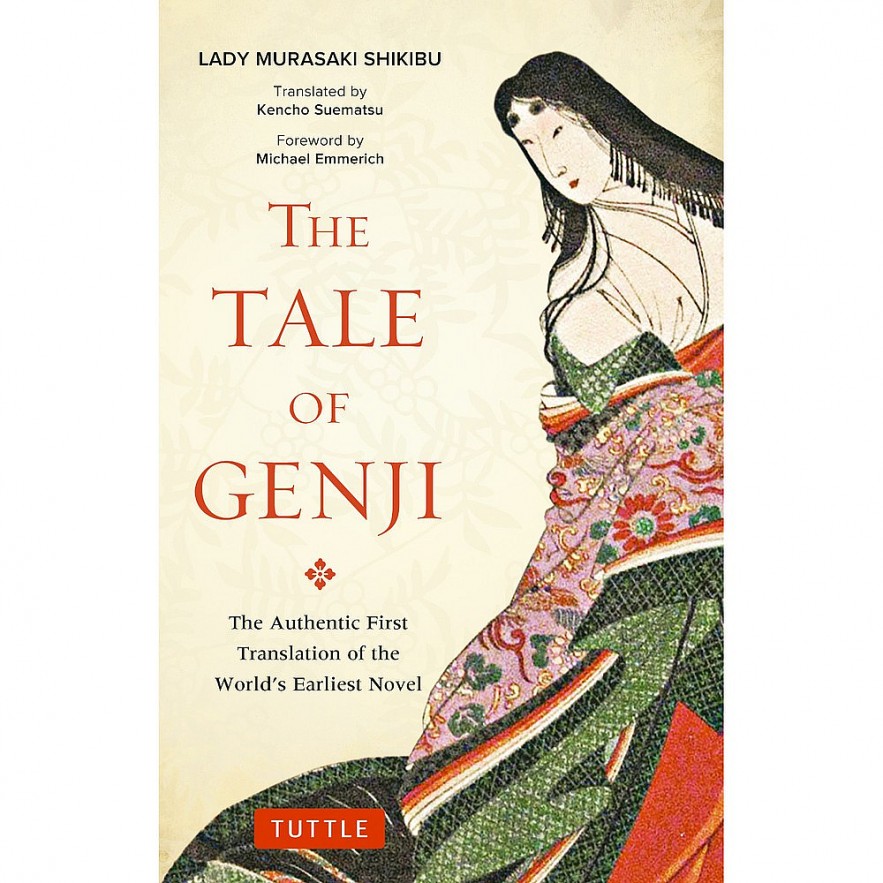 |
| Murasaki Shikibu, The Tale of Genji |
The Tale of Genji is widely regarded as the inaugural novel in the world and was authored by Murasaki Shikibu, a female aristocrat of moderate rank, in the early 11th century. The world's first novelist is a woman of color.
The book is widely acknowledged as a masterpiece of global literature and an excellent entry point for those interested in delving into the finest Japanese novels. The Tale of Genji portrays the intricacies of human existence and the cultural milieu of the Japanese imperial court, employing monologues and exquisite poetry.
Translators: Suematsu Kenchō, Arthur Waley, Edward G. Seidensticker, Helen McCullough, Royall Tyler, Dennis Washburn.
2. Lonely Castle in the Mirror
The book "Lonely Castle in the Mirror" by Mizuki Tsujimura takes place in Japan. Six teens get trapped in a magical and mysterious castle after entering it through a mirror. This is the main plot point. There are many rooms and puzzles in the castle, and the teens need to figure them all out to get out.
The teens face their deepest fears and insecurities as they work together to get away, and they start to see how their lives are linked. Some of the things that the book is about are friendship, finding out more about yourself, and the power of your imagination. Kokoro is the main character of the story. She is shy and quiet, and she feels alone and lonely. Because of what happens in the castle, Kokoro learns how to connect with others and open up. She also finds out how strong and resilient she is.
Overall, "Lonely Castle in the Mirror" is an interesting and thought-provoking book that mixes fantasy and reality in a unique way. The story shows how facing your fears can change your life and how important it is to connect with other people to find meaning and purpose in your life.
Author: Mizuki Tsujimura
Publication date: 2017
3. Norwegian Wood (Haruki Murakami)
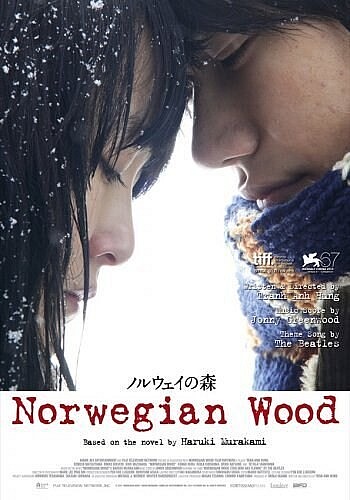 |
| Norwegian Wood (Haruki Murakami) |
Norwegian Wood (Noruwei no Mori) is a literary work written by the Japanese author Haruki Murakami and was first published in 1987. The novel is a poignant narrative of both the experience of losing something dear and the exploration of one's sexual identity. The narrative is presented from the perspective of Toru Watanabe, who reminisces about his time as a university student in Tokyo. By recounting his memories, readers witness Watanabe forming connections with two contrasting women: the stunning yet emotionally distressed Naoko and the extroverted, vibrant Midori.
This novel takes place in Tokyo during the late 1960s, a period when Japanese students, much like their counterparts in other nations, were engaged in protests against the existing social and political system. Murakami depicts the student movement in the novel as predominantly lacking determination and displaying hypocrisy, as observed by Watanabe and Midori. Murakami derived the initial portion of the novel from a previous short story titled "Firefly." The narrative was subsequently included in the compilation Blind Willow, Sleeping Woman. Norwegian Wood achieved immense popularity among Japanese adolescents, catapulting Murakami to fame in his native country (reportedly causing him considerable distress at the time).
Author: Haruki Murakami
Publication date: 1987
4. Kafka on the Shore (2002)
Haruki Murakami is a Japanese author whose book Kafka on the Shore came out in 2002. The novel is like a dream, and at some point, two separate stories come together.
Kafka Tamura, a fifteen-year-old boy from Tokyo, runs away from home in the first story to find a lost memory and his long-lost mother and sister. Narratively, the second story is about Nakata, an old man who can't read or write but has an unusual ability to talk to cats. Nakata goes on a quest to find a lost cat and meets Kafka on the way.
People love this book because it explores magical realism and important ideas like identity, memory, and what reality really is. There are also strange and supernatural parts in the book, like talking cats, a forest full of talking spirits, and a library that doesn't exist in time or space. Many people, including critics, really liked Kafka on the Shore. It even won a World Fantasy Award. The book has been translated into many languages and is thought to be one of Murakami's most famous and important works.
Author: Haruki Murakami
Publication date: 2002
Learn more: Full Text of AI-Generated Novel 'The Land of Machine Memories' - Literary Prize in China
5. Ryu Murakami, In the Miso Soup (1997)
There is no connection between Ryu Murakami and Haruki. He is a Japanese author whose books explore human nature through themes like loss, drug use, surrealism, murder, and war, all set in the dark country of Japan.
In the Miso Soup, an overweight American tourist and the tour guide he hired to show him Tokyo's seedy nightlife tell their story. The guide starts to think, though, that his new client might actually be a famous serial killer.
"Travelers who like scary movies have dull lives..." It makes you feel better to know that you're still alive and the world is the same as it was before a really scary movie. That's the real reason we watch scary movies: they take the edge off of scary things. If they stopped making them, I bet there would be a lot more serial killers. If someone is stupid enough to get the idea to kill people from a movie, they could also get it from the news.
Translator: Ralph McCarthy
Murakami’s other recommended works include Almost Transparent Blue and Coin Locker Babies.
6. Jun’ichiro Tanizaki, The Makioka Sisters (1943-48)
Jun'ichiro Tanizaki is a highly acclaimed Japanese novelist who has gained significant popularity following the renowned Natsume Sōseki. Certain novels by the author depict a provocative realm of sexuality and harmful erotic fixations, while others illustrate the intricacies of family life within the framework of the swift transformations occurring in 20th-century Japanese society.
The Makioka Sisters belongs to the latter classification, portraying the narrative of four sisters and the deteriorating prosperity of their conventional Japanese family. The story depicts the affluent lifestyle of Osaka in the period just prior to World War II, focusing on the theme of pride in a fading era.
Translator: Edward G. Seidensticker
7. No Longer Human
The Japanese author Osamu Dazai wrote the book No Longer Human, which came out for the first time in 1948. The novel is partly based on the author's own life and follows the character Yozo, a troubled young man who feels alone and hopeless and can't find a place in society where he belongs.
There are three parts to the book, and each one shows a different time in Yozo's life. In the first part, Yozo thinks about his childhood and adolescence and how hard it was for him to connect with other people. As a student in Tokyo, the second part follows Yozo as he does a number of things that hurt himself and forms unstable relationships with different women. The third part shows Yozo as a homeless person who thinks about his past and his place in society.
Many people think that No Longer Human is the best modern Japanese book ever written because of how honestly it shows mental illness and being alone in society. The novel has been praised by critics for its beautiful writing and vivid descriptions of the human condition. It also looks at issues like identity, belonging, and the search for meaning in life.
Author: Osamu Dazai
Publication date: 1948
8. Kokoro (Soseki Natsume)
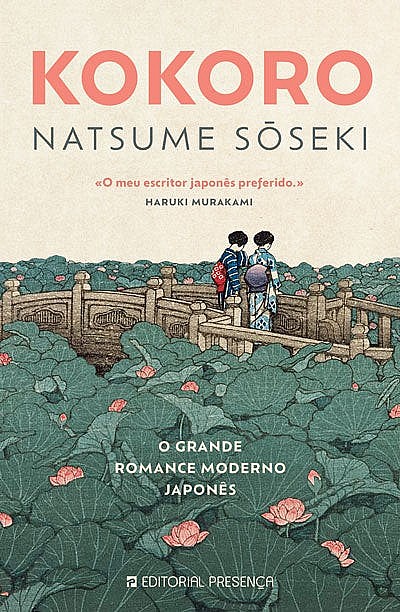 |
| Kokoro by Soseki Natsume |
The Japanese author Soseki Natsume wrote the book Kokoro, which came out for the first time in 1914. "Kokoro" is a Japanese word that can mean "heart," "mind," or "spirit." The book is about the complicated emotional and mental lives of the characters.
There are three parts to the book. In the first part, which takes place in Tokyo during the Meiji era (1868–1922), the narrator is introduced as a young college student who becomes close with an older man he calls "Sensei." After a few years, the second part takes place, after the narrator has graduated and moved to Tokyo to find work. In this part, the narrator finds out more about Sensei's past and tries to figure out why his friend is depressed and feels alone.
In the third part of the book, the narrator gets away from the stress of city life by going to a small village in the middle of nowhere. He meets a young woman named Ojosan there and falls in love with her. As the book goes on, the narrator has to face some hard truths about his past and his relationships with Sensei and Ojosan. Kokoro is considered a classic work of modern Japanese literature. It deals with identity, loneliness, and the conflict between traditional Japanese values and modern Western influences.
Author: Sōseki Natsume
Publication date: 1914
9. Rashomon (Ryunosuke Akutagawa)
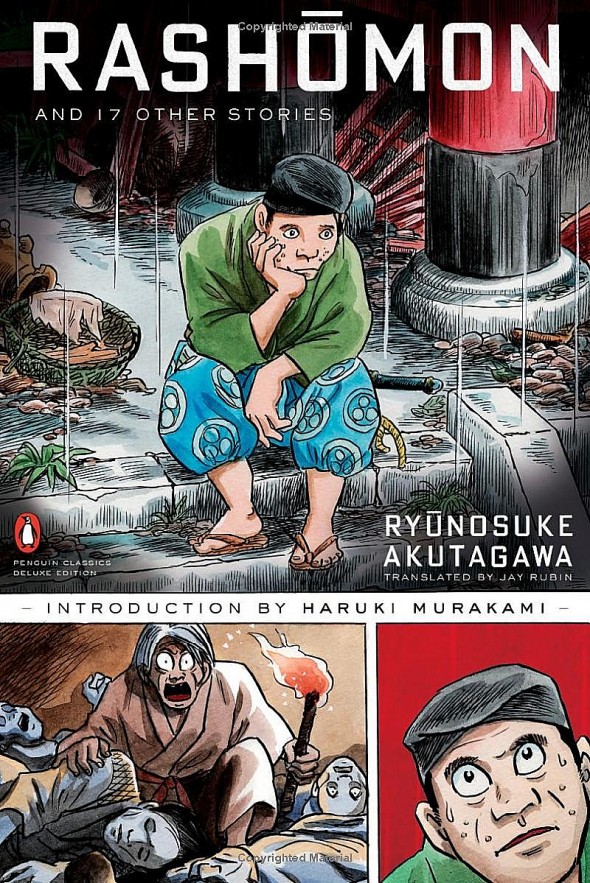 |
| Rashomon (Ryunosuke Akutagawa) |
The short story Rashomon was written by Ryunosuke Akutagawa and came out for the first time in 1915. The story is about a woodcutter, a priest, and a commoner who are talking about how a samurai was killed and his wife was raped not long ago. There are different points of view and contradictory accounts of the same events in this story, which makes it stand out. The commoner, the priest, and the woodcutter all tell their own versions of the story. It is up to the reader to figure out what is really going on from these different points of view.
Many people think that Rashomon is the best work of modern Japanese literature. It has been turned into many other forms, including a movie directed by Akira Kurosawa. The story goes into deep questions about things like what truth is, how reliable human perception is, and how complicated morality is. Ghosts of the dead were said to haunt the gate in Kyoto with the same name. The title "Rashomon" refers to that gate. The story is important to Japanese culture, and people from all over the world have studied and thought a lot about it.
Author: Rynosuke Akutagawa
Publication date: 1915
10. A Pale View of the Hills (1982)
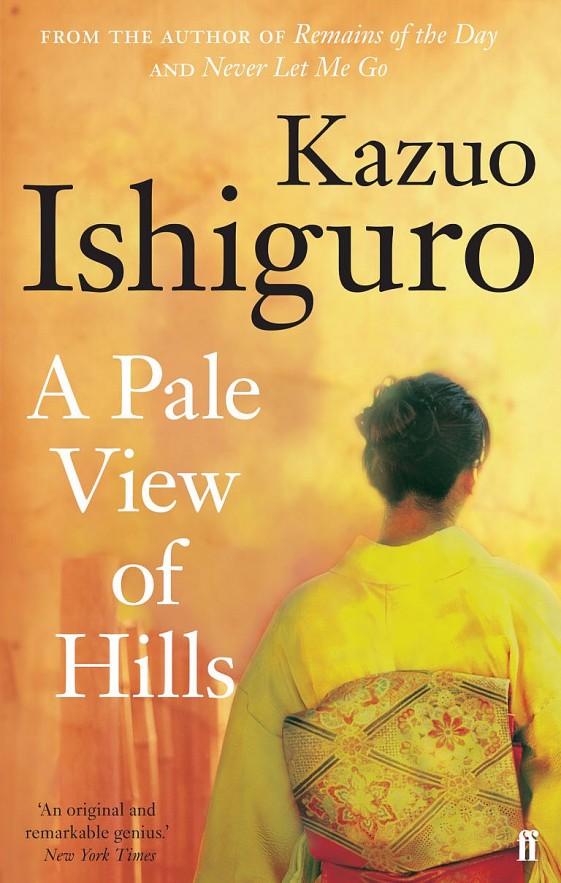 |
| A Pale View of the Hills |
Kazuo Ishiguro, a British author of Japanese heritage, was awarded the 2017 Nobel Prize for Literature. Born in Nagasaki, he relocated to the United Kingdom at the age of five.
Ishiguro's literature is renowned for its stylistic ambiguity, exquisite prose, and profound emotional profundity. His inaugural novel, A Pale View of the Hills, was published in 1982. It chronicles the tale of a mature Japanese woman residing by herself in England. Reflecting on her daughter's recent suicide, she introspects and recalls a summer she and her friends spent in Nagasaki, endeavoring to reconstruct their lives in the aftermath of the war. A Pale View of the Hills is a novel that takes place in two countries. It explores the challenges of assimilating into different cultures and adapting to changes within a family. The story delves into themes of loss, rediscovery, and the complex nature of memory.
11. The Easy Life in Kamusari
"The Easy Life in Kamusari" by Shion Miura is a Japanese book. The story is about a young woman named Tsukiko who goes back to her hometown of Kamusari after being away for a long time. The man Tsukiko knew as a child is named Sasamoto, and she runs into him again. The two start drinking and talking about old times at a nearby bar.
As they spend more time together, Tsukiko and Sasamoto build a deep and meaningful relationship based on trust and understanding. They enjoy the simple things in life in Kamusari, like watching the seasons change and eating food from the area.
On November 2, this sweet coming-of-age story came out. The creative book is a love letter to the art of forestry and the beauty of trees. It's also a great, easy read—sweet, happy, funny, and full of exciting things to happen. Overall, the book is a soft and thoughtful look at the good and bad things about living a simple life in a small town. It makes you think about how important friendship, connection, and finding happiness in small things are.
Author: Shion Miura
Publication date: 2009
12. Kitchen (Banana Yoshimoto)
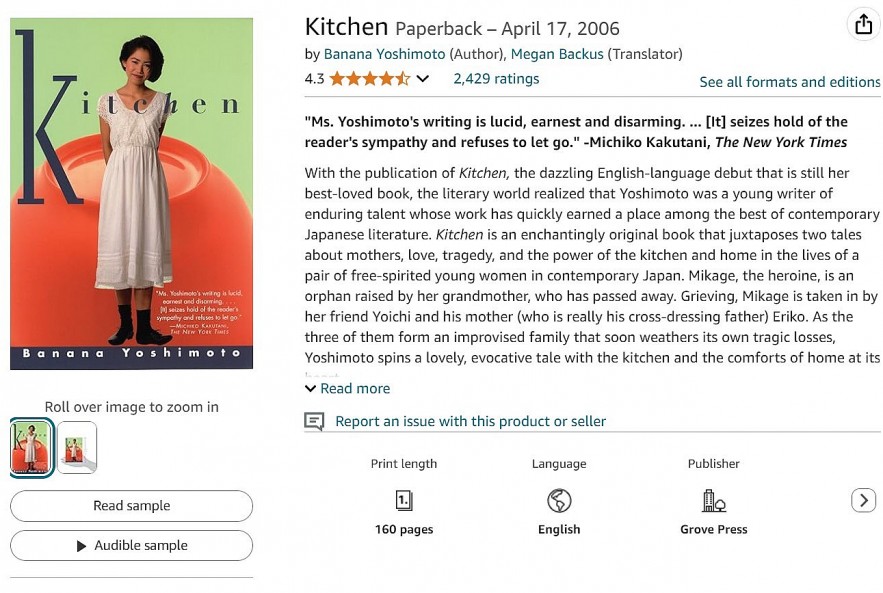 |
| Kitchen - One of the Best Japanese Novels in English That Are Must Read |
Kitchen is a book that was written by Japanese author Banana Yoshimoto and came out for the first time in 1988. Mikage is a young woman who has lost both of her parents and is trying to figure out where she fits in the world. The book is about her coming of age. Many people love this book because it has simple, poetic writing and talks about things like love, loss, and looking for meaning in life. The story takes place in modern Japan and has a wide range of characters who are all looking for their own sense of purpose and place in the world.
One thing that makes Kitchen stand out is that it focuses on food and cooking. The book shows how much fun it is to cook and how comforting it is to share a meal with people you care about. The book also talks about how food can bring people together and help them heal emotionally.
Kitchen has gotten a lot of praise for how deeply it makes people feel and how well it shows how complicated life is. The book has been translated into many languages and is a huge hit in Japan and other places around the world. Many people think that Kitchen is one of Banana Yoshimoto's most famous and important works. It has been made into a movie and a play.
Author: Banana Yoshimoto
Publication date: 1988
13. Night on the Galactic Railroad
 |
| Night on the Galactic Railroad |
The Japanese author Kenji Miyazawa wrote the book Night on the Galactic Railroad in 1927. Two young boys named Giovanni and Campanella get on a train that goes through the galaxy and stops at different planets along the way. It's famous for having imaginative and philosophical themes, as well as poetic language and images that mean more than one thing. As the boys travel through space, they meet different characters that represent different sides of people. These characters make the boys think about life, death, and the universe.
There is no other book like Night on the Galactic Railroad. It is a unique mix of fantasy, science fiction, and philosophy. The story takes place in a world that feels like a dream, where reality and fantasy are mixed together. The characters are on a spiritual and physical journey through the galaxy. The book is famous for using poetic language and giving vivid descriptions of the characters' travels through space and time. It also explores deep topics like what life is all about, why people suffer, and the search for transcendence.
Author: Kenji Miyazawa
Publication date: October 1934
14. The Sound of Waves
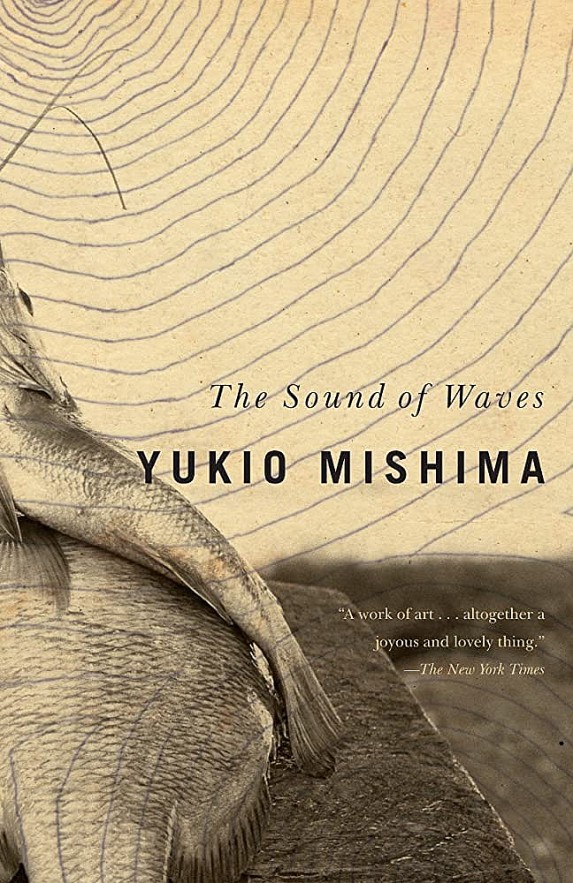 |
| The Sound of Waves |
The Sound of Waves is a book by Japanese author Yukio Mishima that came out for the first time in 1954. Shinji is a young fisherman who falls in love with Hatsue, a beautiful pearl diver. The story takes place on a small island in Japan's Seto Inland Sea. People love this book because it has simple, beautiful writing and talks about things like love, tradition, and the conflict between modernity and tradition. The book, which is often thought of as a coming-of-age story, is about Shinji's struggles with young love and learning how to be a man in his community.
Another interesting thing about The Sound of Waves is how it shows Japanese culture and everyday life in a traditional fishing village. The book shows how beautiful nature is and how important family and community are in Japanese culture. Many people have said nice things about the book's beauty, simplicity, and emotional depth. It has been translated into many languages and is now considered a classic in Japanese literature. The Sound of Waves has been made into a movie and a play, and people all over the world still read and study it.
Author: Yukio Mishima
Publication date: 1954
15. I Am a Cat
The Japanese author Soseki Natsume wrote the book I Am a Cat, which came out for the first time in 1905 and 1906. The book is a satire that follows the adventures of an unnamed cat and the different people who live with its owner. People love this book because it's funny and looks at how people act through the eyes of a cat. The cat looks at people's actions without bias, and its comments on its owners' flaws and the flaws of people they know are often biting and satirical.
People also love I Am a Cat because it uses language in creative ways and shows how people lived in Japan in the early 1900s. The book is broken up into three parts, or volumes. Each part has a collection of short stories that are linked to each other. The stories are about a lot of different things, like politics, social class, and how Japan's culture was changing at the time. People all over the world have praised I Am a Cat for being funny, insightful, and satirical about Japanese culture. The book has been translated into many languages and is now considered a classic in Japanese literature.
Author: Natsume Sōseki
Publication date: 1905–1906
Learn more: Top 10 Best and Famous Detective Novels You Must Read
16. Snow Country (1935)
Yasunari Kawabata, a Japanese author, wrote the book Snow Country, which came out for the first time in 1935.
The story takes place in a hot springs town in the snowy mountains of northern Japan. It's about the relationship between a rich businessman from Tokyo named Shimamura and a young geisha named Komako. The book is known for its simple, poetic writing and for exploring themes like love, loneliness, and how quickly life changes. A lot of people see the book as a reflection on the beauty and fragility of life, with the snowy landscape representing how the characters feel.
A lot of people have praised Snow Country for its beautiful lyrics and ability to make people feel like they are in the right place at the right time. In 1968, the book won the Nobel Prize in Literature, making Kawabata the first Japanese author to do so. The book has been translated into many languages and is now considered a classic in modern Japanese literature.
Author: Yasunari Kawabata
Publication date: 1935
17. Yoko Ogawa, The Diving Pool (2008)
The Diving Pool, written by acclaimed author Yoko Ogawa, is a collection of three novellas that explore themes of love, fertility, obsession, cruelty, and innocence in a haunting manner. One story depicts a teenage girl who is isolated and develops romantic feelings for her foster brother. In another story, a young woman meticulously documents her sister's pregnancy. Lastly, a woman nostalgically revisits her former college dormitory located on the outskirts of Tokyo.
Translator: Stephen Snyder
18. Fumiko Enchi, The Waiting Years (1957)
Fumiko Enchi, a prominent Japanese writer during the Showa period, is widely recognized as Japan's foremost female novelist.
Enchi's acclaimed novel, The Waiting Years, takes place during the Meiji era and portrays women who are compelled to embrace degrading roles imposed on them by a patriarchal societal structure. The protagonist is the spouse of a government official, who experiences humiliation when her husband acquires several concubines. The story deliberately mirrors The Tale of Genji.
Translator: John Bester
19. Natsuo Kirino, Out (1997)
Natsuo Kirino is a prominent Japanese novelist who has played a significant role in the recent surge of female writers in the genre of Japanese detective fiction.
Kirino's acclaimed literary thriller, Out, narrates the tale of a savage homicide in the outskirts of Tokyo, where a young mother strangles her oppressive spouse and subsequently enlists the aid of her colleagues to dispose of the corpse and conceal the wrongdoing.
Translator: Stephen Snyder
20. The Thief (2009)
Japan is one of the safest places in the world when it comes to small crimes. People in coffee shops don't mind leaving their laptops and wallets on the table when they go to the bathroom or order coffee. But Fuminori Nakamura's 2009 book The Thief will make you think twice about leaving that bag unattended.
The novel that won the Kenzaburo Oe Prize is dark, shady, and a bit too familiar. It's about one of Japan's best pickpockets, a man who can blend in with Tokyo's crowds so well that no one can see him and steals wallets from strangers with ease. The thief gets into a jam that not even the smoothest criminal can get out of after getting a little too ambitious and taking an offer he couldn't refuse.
21. Coin Locker Babies (1980)
People often call modern writer Ryu Murakami the "other Murakami" because he is also a major figure in Japanese literature.
The name isn't really fair, since his dark, honest, and sometimes overtly graphic stories have had a big impact on modern literature. Coin Locker Babies, which came out in 1980, is a typical Murakami dystopian future story that looks at the worst parts of people. The story is about Hashi and Kiku, two young boys who were left in nearby train lockers when they were babies and grew up in an orphanage. The two decide to work together to get back at the women who left them.
22. Silence (1966)
Japan has a long and interesting Buddhist history that has been written about in many works since the country's literary history began. Japan does, however, also have a history with Christianity.
Shusaku Endo's novel Silence, which came out in 1966, shows how the relationship between Japan and Christianity is often dark but also very interesting. In Silence, the story follows the journey of Father Sebastian Rodrigues, a Jesuit priest. The story takes place in the 17th century, a time when Christians had to hide their faith or face persecution or even death.
Endo's masterful work of historical fiction is one of the easiest ways to understand this dark time in Japanese history. It takes a realistic look at the lives of Japan's Kakure Kirishitan, or "Hidden Christians." Martin Scorsese, who is one and only, also made a movie about this story in 2016.
23. Asleep
Banana Yoshimoto, the author of the revolutionary modern novel Kitchen, is an essential addition to any compilation of Japanese literature.
Yoshimoto's novel Kitchen, which delves into the complex themes of family, gender, identity, and belonging, captivated us in a previous article. However, Asleep is another brilliant masterpiece by Yoshimoto.
Yoshimoto's narrative delves into the topic of sleep in a society that lacks sufficient rest, intertwining the experiences of three young women who are each immersed in their own sleep-focused tales. One woman experiences somnambulism, while another, who is struggling with alcohol addiction, is tormented by a recurring melody every night before falling asleep and develops romantic feelings for a man whose spouse is in a comatose state.
Each narrative seamlessly navigates between the realms of reality and surrealism, mirroring the transitional state we all encounter between wakefulness and unconsciousness.
24. The Housekeeper and the Professor (2003)
How would you choose to exist if each day were both your final and initial one? Alternatively, what if you were restricted to solely existing in the current moment? What would your life appear like?
The Housekeeper and the Professor, a novel written by Yoko Ogawa in 2003, delves into profound philosophical inquiries. Following a brain injury, the highly intelligent mathematician, referred to as the Professor, is left with a short-term memory capacity that lasts for a duration of eighty minutes.
The book intertwines the narrative of the Professor with that of his housekeeper, the woman assigned to care for him. Despite beginning each day with a blank canvas, the housekeeper, her young son, and the Professor gradually develop a strong and unbreakable bond.
25. Moshi Moshi
Moshi Moshi, the latest translated novel by Banana Yoshimoto, is a poignant and unconventional bildungsroman that explores themes of loss, family, community, and gastronomy.
The novel chronicles the story of Yoshie, a young woman in her twenties, whose father, a musician, perishes in a peculiar incident involving a love-murder-suicide agreement with an unknown individual. In an effort to create separation from the tragic event, Yoshie and her mother relocate to a small apartment in Shimokitazawa.
Nevertheless, Yoshie's previous experiences are not easily erased from her memory, and her sorrow continues to trouble her during her attempts to establish a fresh existence in Tokyo.
Book translated by Asa Yoneda
In Conclusion
Delving into Japan's literary realm is akin to immersing oneself in a labyrinth of unexplored marvels. Throughout history, the nation has given rise to a number of exceptionally innovative and productive authors since the advent of the written word.
These 25 novels have long been considered essential reading for book enthusiasts who appreciate Japanese literature. Experience contemporary Japanese literature translated into English!
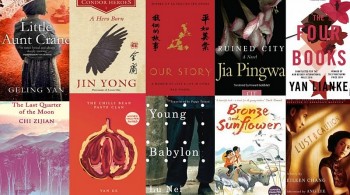 Top 10 Best Free Sites To Read Chinese Original Novels Top 10 Best Free Sites To Read Chinese Original Novels Looking for famous sites to read Chinese raw novels? Check out the list right below to know Top 10 Best Free Sites To Read Chinese ... |
 Top 15 Best Legal & Free Sites To Read Light Novels Top 15 Best Legal & Free Sites To Read Light Novels Light novels are well-known types of fiction stories that are enjoyed by millions of readers worldwide. Both young adults can read their favorite light novels ... |
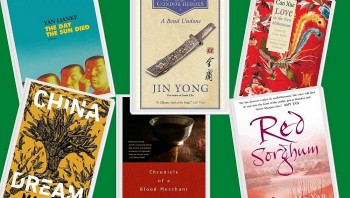 Top 5 Most Popular Apps to Read Chinese Novels In English Top 5 Most Popular Apps to Read Chinese Novels In English Chinese novels are published online in English so that readers can get access to their favorite books. If you are searching for apps to read ... |
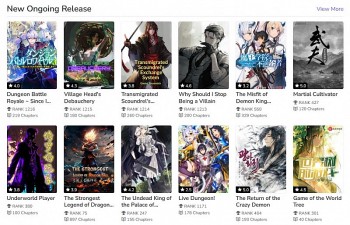 10 Most Popular Websites to Read Chinese Novels In English 10 Most Popular Websites to Read Chinese Novels In English Do you want to read Chinese novels but don’t know Chinese? Don’t worry! We have famous sites where you can find Chinese novels in English. |























